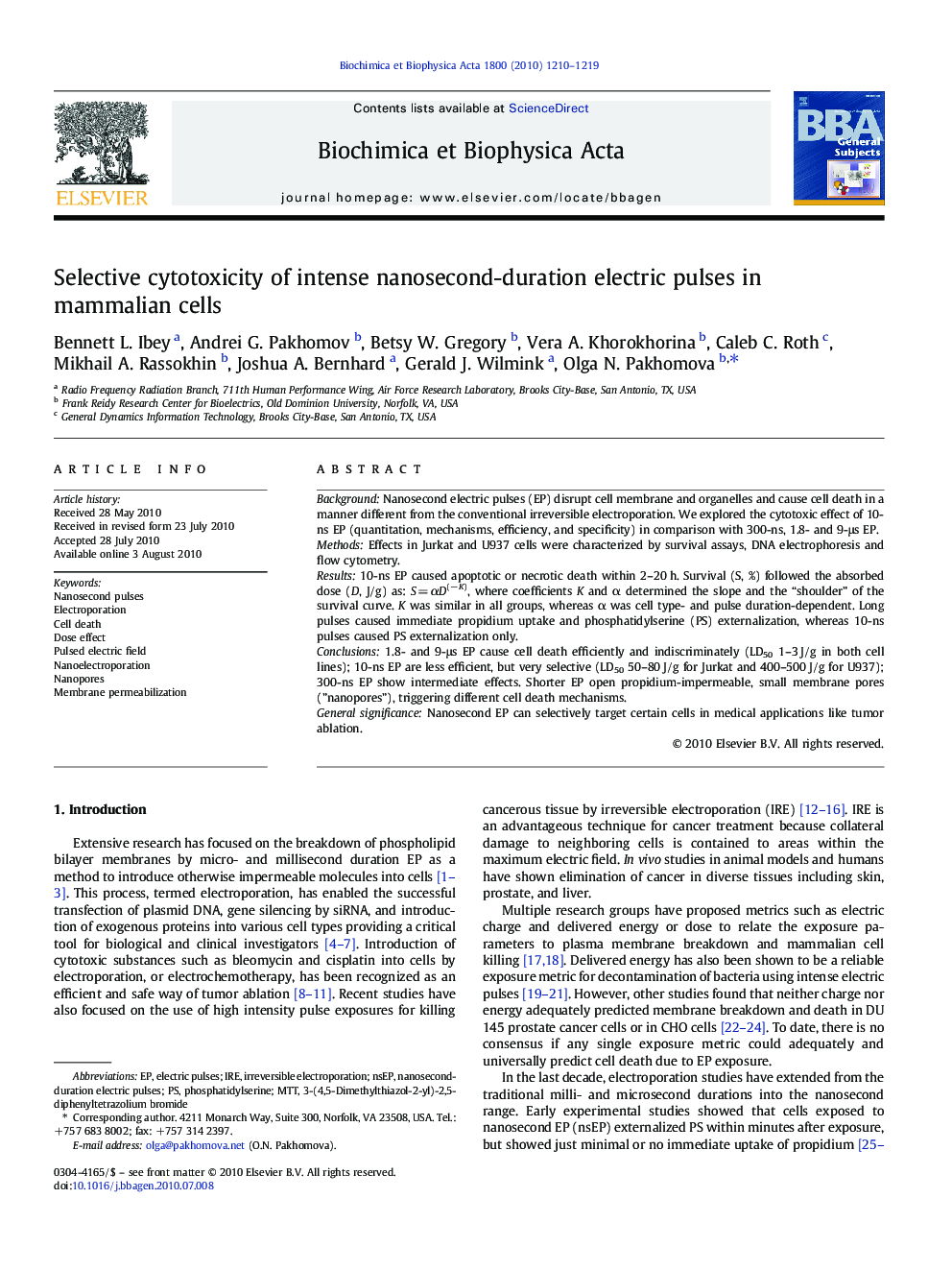| Article ID | Journal | Published Year | Pages | File Type |
|---|---|---|---|---|
| 1947917 | Biochimica et Biophysica Acta (BBA) - General Subjects | 2010 | 10 Pages |
BackgroundNanosecond electric pulses (EP) disrupt cell membrane and organelles and cause cell death in a manner different from the conventional irreversible electroporation. We explored the cytotoxic effect of 10-ns EP (quantitation, mechanisms, efficiency, and specificity) in comparison with 300-ns, 1.8- and 9-μs EP.MethodsEffects in Jurkat and U937 cells were characterized by survival assays, DNA electrophoresis and flow cytometry.Results10-ns EP caused apoptotic or necrotic death within 2–20 h. Survival (S, %) followed the absorbed dose (D, J/g) as: S = αD(−K), where coefficients K and α determined the slope and the “shoulder” of the survival curve. K was similar in all groups, whereas α was cell type- and pulse duration-dependent. Long pulses caused immediate propidium uptake and phosphatidylserine (PS) externalization, whereas 10-ns pulses caused PS externalization only.Conclusions1.8- and 9-μs EP cause cell death efficiently and indiscriminately (LD50 1–3 J/g in both cell lines); 10-ns EP are less efficient, but very selective (LD50 50–80 J/g for Jurkat and 400–500 J/g for U937); 300-ns EP show intermediate effects. Shorter EP open propidium-impermeable, small membrane pores (”nanopores”), triggering different cell death mechanisms.General significanceNanosecond EP can selectively target certain cells in medical applications like tumor ablation.
